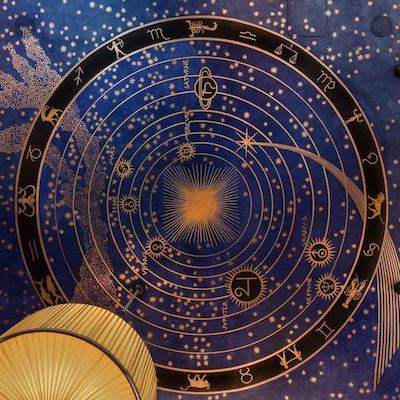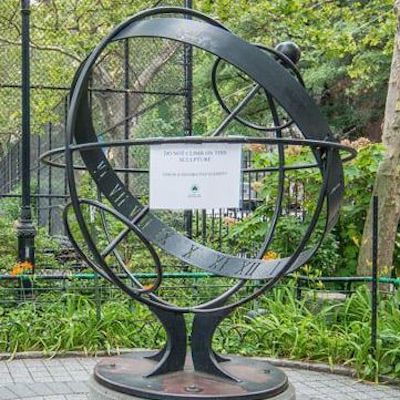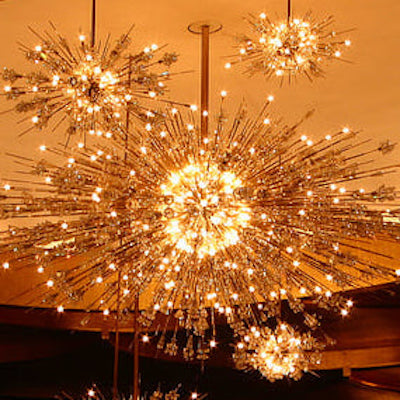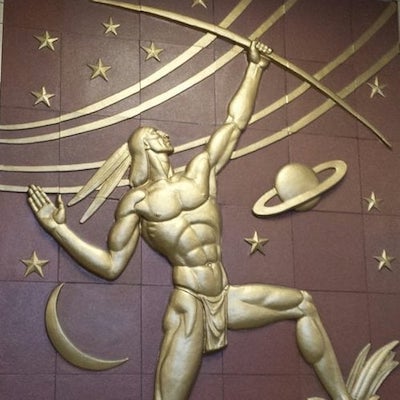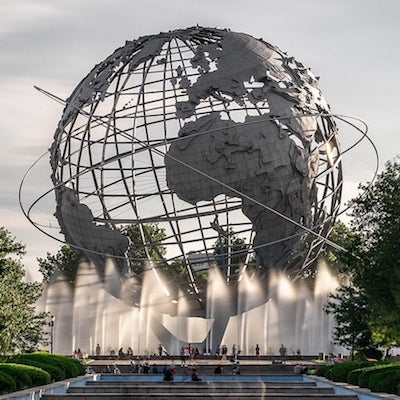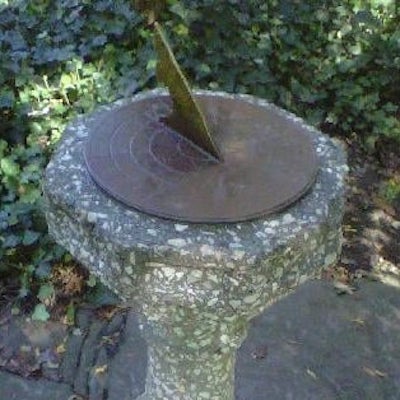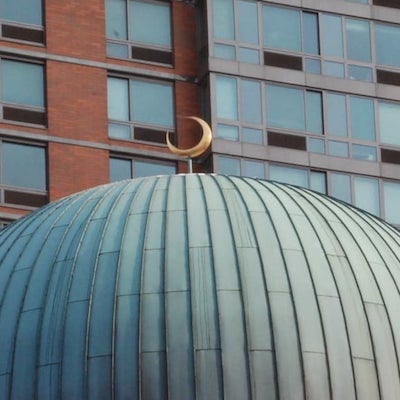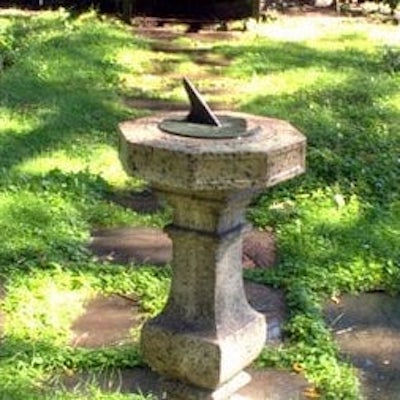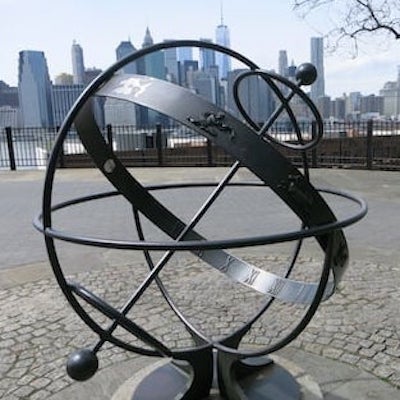CITY OF STARS SITES
-
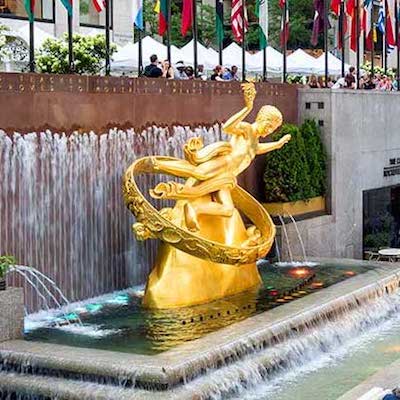
-
1. Atlas & Prometheus Sculptures
Rockefeller Center
Atlas, brother to Prometheus, was a half-man, half-god giant Titan of astronomy and navigation. Atlas helped lead a war against the Olympic Gods, but after the Titan's defeat, Atlas was punished by Zeus and forced to carry the world on his shoulders. The world he carries is an armillary sphere. [...]
-
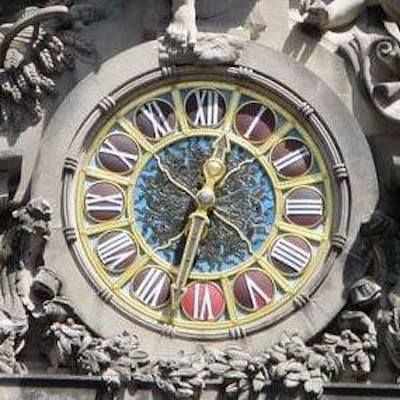
-
2. Mercury Sculpture
Grand Central Terminal
Mercury is at the front of the building above the clock. With him are Hercules and Minerva, whose namesake is an asteroid. The eagle could stand for Aquila. The clock below Mercury, 13 feet in diameter, is the world’s largest example of Tiffany glass. [...]
-
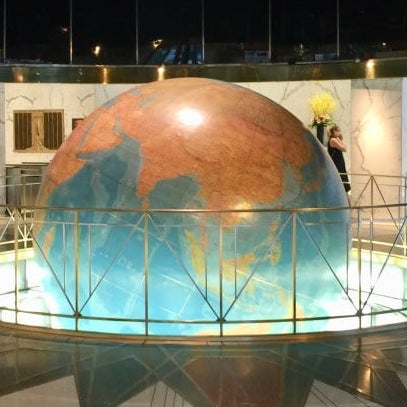
-
3. Globe of the Earth
Daily News Building - Lobby
This building was the home of the Daily News (a New York City daily newspaper) until 1994. It was completed in 1930 and the owners allowed $150,000 to be spent on the lobby. The result was a beautiful space designed in the art deco style, with an oversized, tilted, rotating globe of the Earth. [...]
-
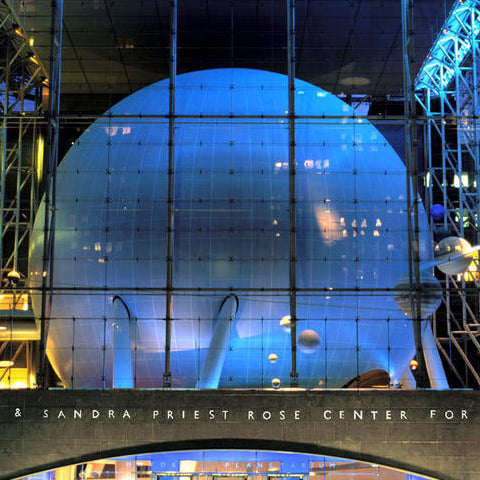
-
4. Planetarium and Hall of the Universe
Rose Center for Earth & Space at AMNH
The Rose Center for Earth and Space encompasses the spectacular Hayden Sphere and exhibitions that explore the vast range of sizes in the cosmos, the 13-billion-year history of the universe, the nature of galaxies, stars, and planets, and the dynamic features of planet Earth. [...]
-
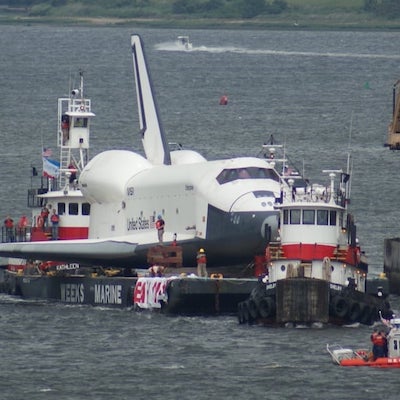
-
5. Space Shuttle Enterprise
& Aurora 7 Mercury Capsule Replica
Intrepid Sea, Air & Space Museum
The Intrepid Sea, Air & Space Museum is an American military and maritime history museum with a collection of ships consisting of the aircraft carrier USS Intrepid and various other maritime vessels, aircraft and spacecraft. It has the Space Shuttle Enterprise and a replica of the Mercury capsule, Aurora 7. [...]
-
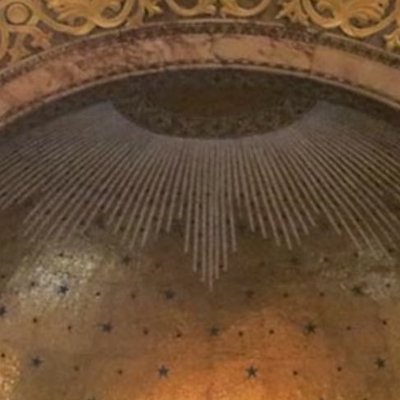
-
6. Crepuscular Rays & Star Ceiling
St. Paul the Apostle Church
The facade above the entrance doorway shows the Sun's crepuscular rays. The ceiling inside the church depicts the stars as they appeared at midnight on January 25, 1885, the day the church was dedicated. Also, the cupola of the altar and the baptistry have star motifs, though they do not represent any actual patterns in the sky. [...]
-
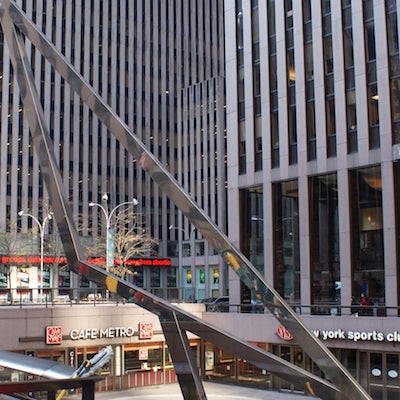
-
7. Sun Triangle
McGraw Hill Building Plaza
Each side of the triangle points to the Sun's noon position in the sky on 3 special days: summer solstice, winter solstice, and equinoxes. No side is vertical, since the Sun is never directly overhead in New York City. Since its construction, a building was erected which blocks the winter solstice noon Sun from reaching the triangle. [...]
-

-
8. Peace Fountain Sculpture
Cathedral of St. John the Divine
The Peace Fountain Sculpture, in bronze, by Greg Wyatt, artist-in-residence to the church, is an odd mix of modern science, old testament biblical depictions, exotic animals, and the decapitated head of Satan. Although originally built as a fountain, the structure has no running water on it currently. [...]
-
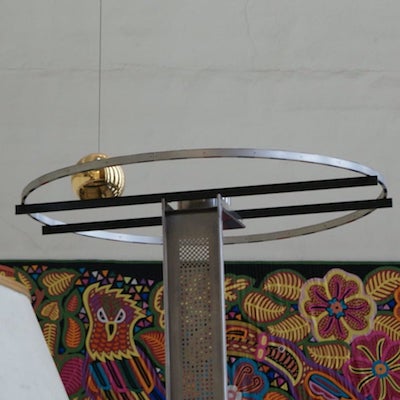
-
11. Sputnik Replica
United Nations General Assembly
A replica of the Soviet Sputnik 1 satellite hangs from the ceiling in the main lobby, a gift to the UN from the Soviet Union in 1959. Sputnik 1 was the first artificial Earth satellite and started the Space Race between the United States and the Soviet Union. [...]
-
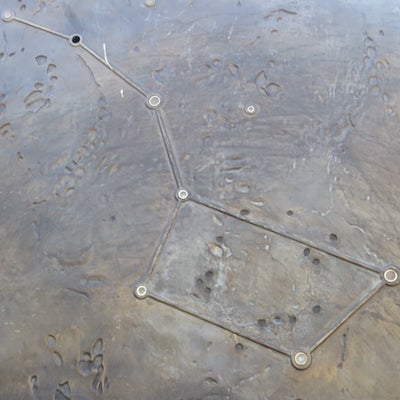
-
12. Big Dipper Asterism
Frederick Douglass Memorial
Artist Algernon Miller and sculptor Gabriel Koren designed the Frederick Douglass Memorial, which includes granite seating and paving patterns based on traditional African-American quilt motifs, as well as bronze perimeter fence with a wagon wheel motif. There is also a bronze water wall depicting the Big Dipper asterism that guided those on the "underground railroad. [...]
-
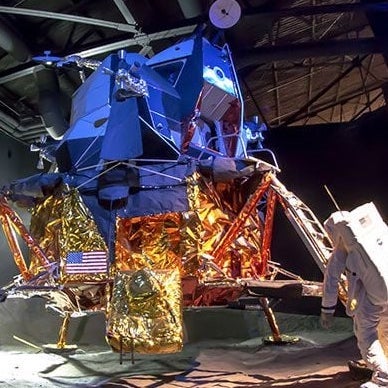
-
13. Lunar Module
Cradle of Aviation Museum
The Cradle of Aviation Museum is an aerospace museum located in Garden City, New York on Long Island to commemorate Long Island's part in the history of aviation. It is located on land once part of Mitchel Field which, together with nearby Roosevelt Field and other airfields on the Hempstead Plains, was the site of many historic flights. [...]
-
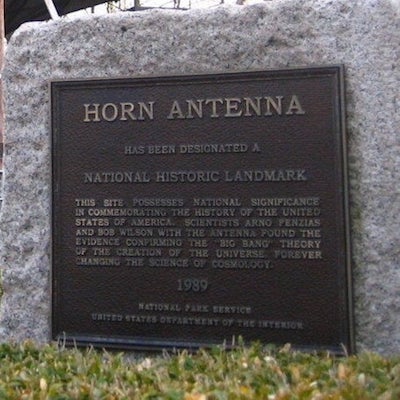
-
14. Holmdel Horn Antenna
Nokia Bell Labs
This is a microwave horn antenna that was used as a satellite communication antenna and radio telescope during the 1960s at Bell Telephone Laboratories. This antenna was the instrument that in 1964 first detected the Cosmic Microwave Background radiation, radiation left over from the Big Bang. [...]
-
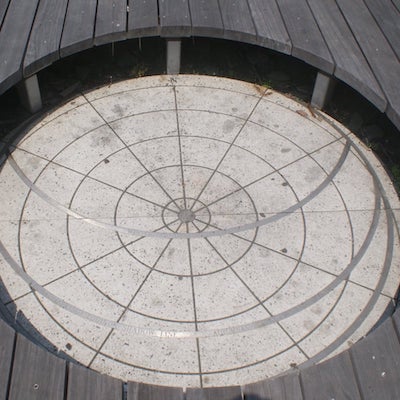
-
17. Solstice Bench
Riverside Park South
Riverside Park South was dedicated in 2005 and its theme is the various railroads that picked up goods from the dock for distribution in NYC and places beyond. The park is located on the site of the former NY Central Railroad’s 60th St. yard, which operated from the 1870’s to the early 1970’s. [...]
-
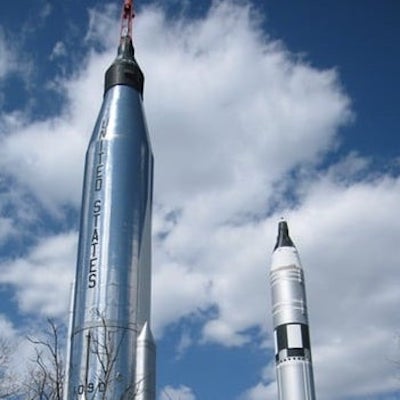
-
18. Rocket Park
New York Hall of Science
The NYSCI is a science museum occuping one of the few remaining structures from the 1964 New York World's Fair. It is New York City's only hands-on science and technology center. There are more than 400 hands-on exhibits focused on biology, chemistry, and physics. [...]
-

-
20. Manhattanhenge
Midtown Manhattan Cross Streets
Manhattanhenge, also called the Manhattan Solstice, is an event during which the setting sun or the rising sun is aligned with the east–west streets of the main street grid of Manhattan. The sunsets and sunrises each align twice a year, on dates evenly spaced around the summer solstice and winter solstice. The sunset alignments occur around May 28 and July 13. [...]
-

-
21. Sundial
Columbia University
This is the base of a sundial whose gnomon, a polished dark green granite sphere having a diameter of 7 feet and weighing 16 tons, is no longer here. In 1910, to commemorate the 25th anniversary of their graduation, the class of 1885 presented the University with the sphere to be placed in the center of 116th St., now College Walk. [...]
-
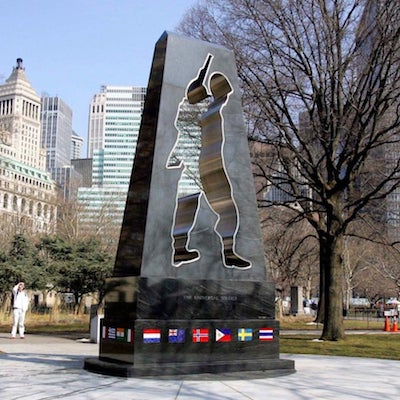
-
23. Obelisk
Korean War Veterans' Memorial
Designed by Welsh artist Mac Adams, the 15-foot obelisk of black granite contains a cutout of a "universal soldier" lit by the Sun. On July 7th at 10 am, as in 1953, the exact time of the declaration of the cease fire, the Sun shines directly through the opening in this sundial, creating a shadow in the shape of the soldier. [...]
-

-
24. Starry Night
Museum of Modern Art
Starry Night is an oil on canvas painting by Dutch Post-Impressionist painter Vincent van Gogh. Regarded as among van Gogh's finest works, Starry Night is one of the most recognized paintings in the history of Western culture. The brightest "star" in the painting at the upper right is belived to be Venus. [...]
-

-
25. Sculptures of Mythological Creatures
Metropolitan Museum of Art
The Met is the largest art museum in the United States. Among its many collections is the European Sculpture and Decorative Arts Collection which includes sculptures of several mythological figures for which constellations/planets are named, including Hercules, Andromeda, Perseus, Mercury, Venus, Jupiter, plus others. [...]
-
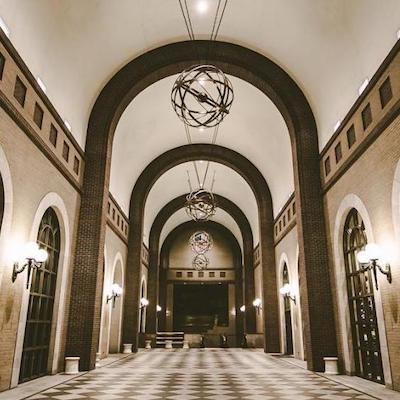
-
27. Armillary Spheres
Federal Reserve of NY Plaza
These four intersecting hoops of antiquity were teaching tools that illustrated the geocentric universe. With a model of Earth at their center, the various angled rings represented important cosmic coordinates where one might track the movements of the Sun, Moon, and planets in the sky. [...]
-

-
28. Mosaic Tiles of Zodiac Symbols
Surrogate's Courthouse
The Surrogate's Courthouse, completed in 1907, was originally called the Hall of Records. It is considered one of the finest examples of Beaux-Arts architecture in New York City. A surrogate is a person deputized by another in a specific role or office. [...]
-

-
29. Bronx Science Mural
Bronx High School of Science
The front lobby of the Bronx High School of Science (a school whose alumni boast 8 Nobel Prizes and 6 Pulitzer Prizes) displays a giant mural. The 63-foot Venetian glass mosaic, titled “Humanities Protecting Biology, Physics, Chemistry,” was created by artist Frank J. Reilly, when the school initially relocated to its current building in 1959. [...]
-
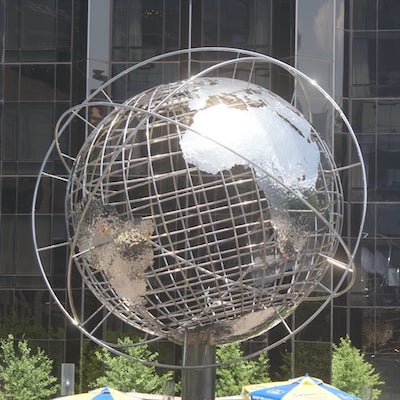
-
32. Earth Model
Columbus Circle
The shiny Earth model is similar to the Unisphere at Flushing Meadow Park in Queens, but 1/5 its diameter. The Unisphere has 3 rings around it representing the three orbits of John Glenn's flight around Earth in 1962. The 3 rings around this Earth model go every which way, with no significance. [...]
-

-
33. Armillary Sphere Sundial
Clara Coffey Park
The park was named after Clara Stimson Coffey (1894-1982), a landscape architect, in 1997. The armillary sphere, installed in 1971 and built of bronze, sports an equatorial band with the zodiac constellations on it in a golden finish. Inside the band are the sundial hours in Roman numerals. [...]
-
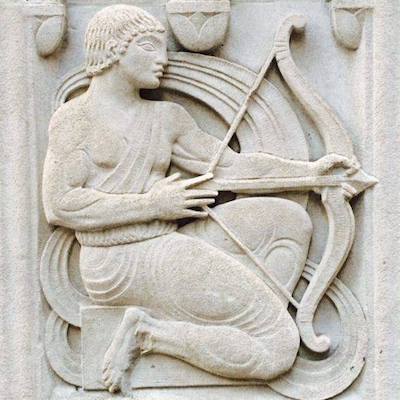
-
34. Zodiac Constellation Bas-Reliefs
Salmon Tower
Salmon Tower was designed by York and Sawyer and completed in 1927. The name is derived from the name of a former owner of the building, but today it is known simply as 11 West 42nd Street. The entrance is framed with 12 reliefs, each illustrating a zodiac constellation [...]
-

-
37. Extruded Parabola & Sundial
Murphy Center at Asphalt Green
Asphalt Green is a nonprofit sports, swim, and fitness organization that was created from the abandoned Municipal Asphalt Plant built in 1942. This building is an extruded parabola. An open-side-down parabola makes for an especially simple yet stable structure. [...]
